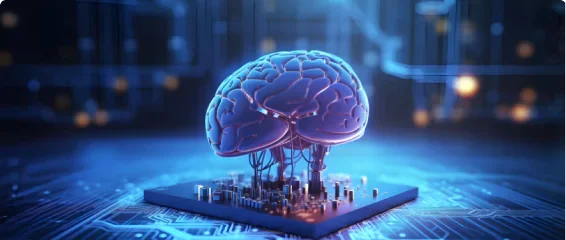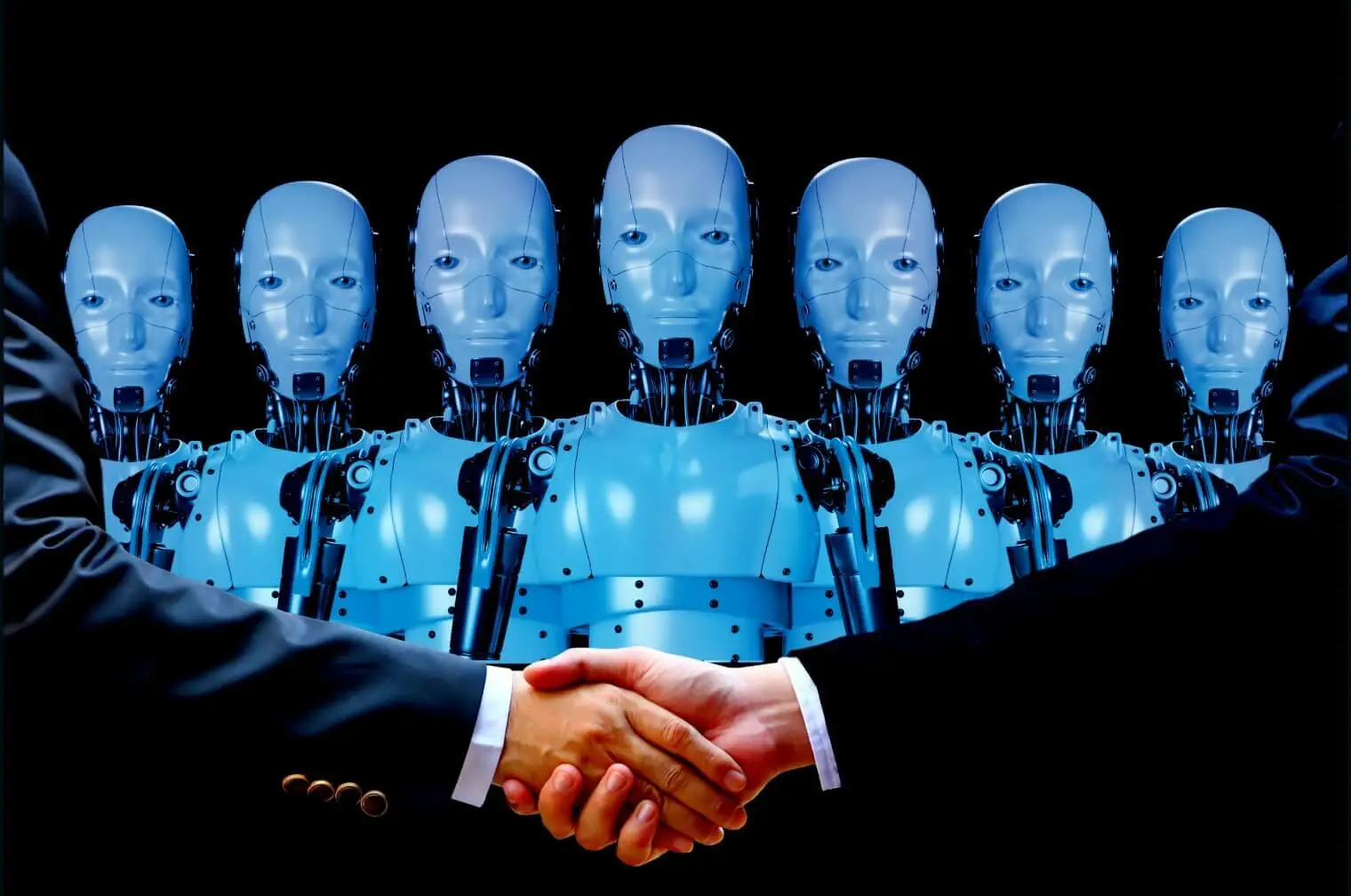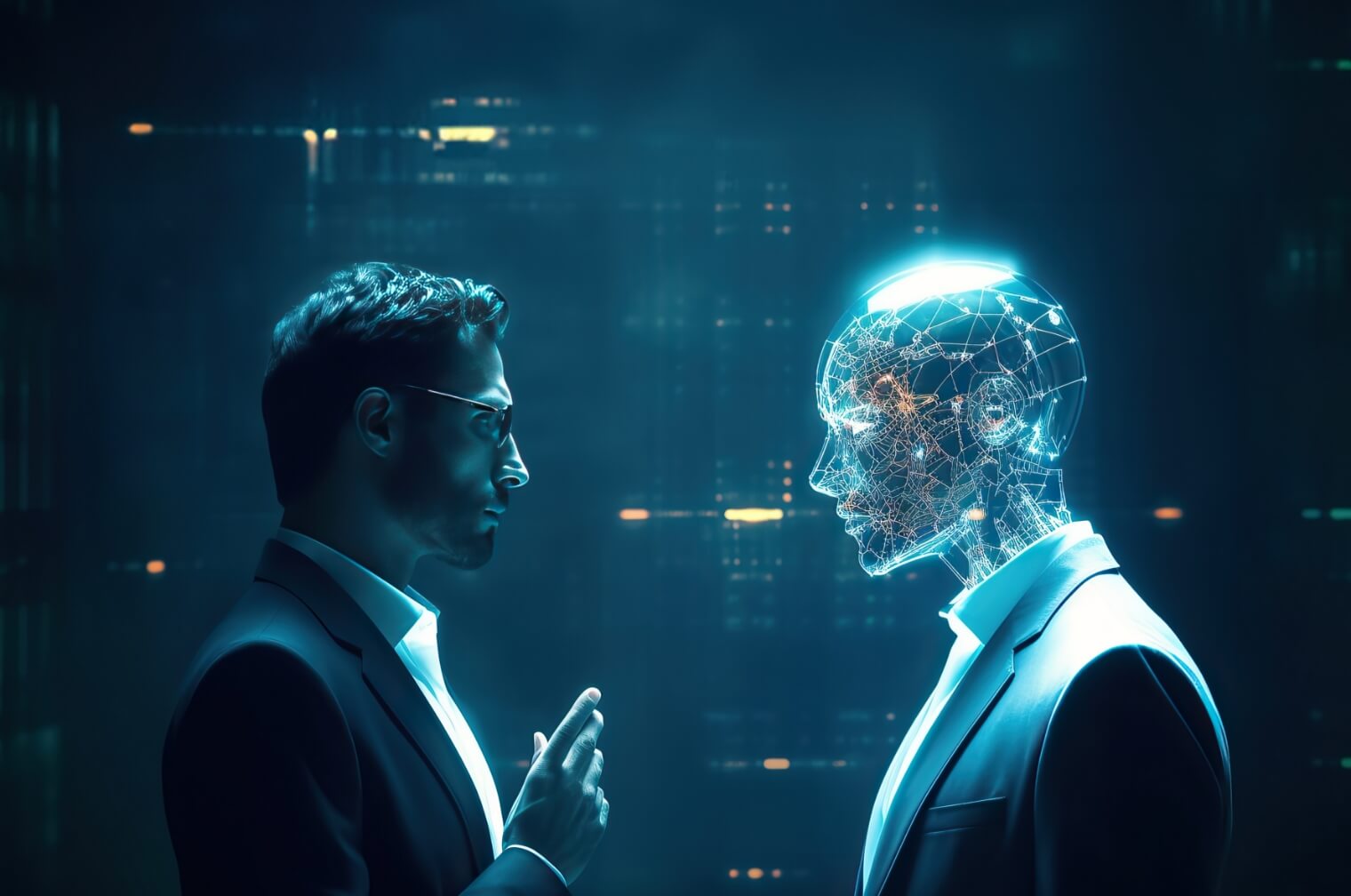Machine Learning and AI for revolution of Tech Companies are changing and streamlining businesses.
Have you ever wondered about the wild world of artificial intelligence (AI) and how we humans wrap our minds around it? So many questions and little to no answers.
All your queries end here as we dive into the fascinating world of “How humans perceive and interact with artificial intelligence: the psychology of AI.” Let us dig deeper into the human-AI relationship.
What is artificial intelligence?
Sci-fi movies introduced concepts of robots and computers chatting with humans, which once seemed achievable only in film. However, we are now living in that reality with voice assistants like Siri and Alexa, smart home devices, and self-driving cars. Artificial Intelligence definition is the simulation of human intelligence in machines designed to think and act like humans, is spreading its wings everywhere.
To make things easy to understand, let us learn what AI development is.
AI, or Artificial Intelligence, is machines’ simulation of human processes. AI allows devices and computers to perform tasks that would otherwise require human intelligence, such as understanding natural language, recognizing patterns, making decisions, and learning from experiences.
AI can be perceived as a helpful sidekick or a threat; the psychology behind our perception can depend on our experiences, beliefs, and cultural influences. Humans can embrace AI with significant interactions rather than being afraid.
Types of AI chatbots
AI development comes in various flavors, such as:
- Narrow or Weak AI: This type of AI is designed to perform a specific task. Think of chatbots, virtual personal assistants (like Siri or Alexa), and recommendation systems (like Netflix suggesting movies).
- General or Strong AI: This hypothetical AI can understand, learn, and apply knowledge across a wide range of tasks – just like a human. We’re not quite there yet, and discussions about the potential ethical and philosophical implications of such AI are ongoing.
- Machine Learning: A subset of AI, machine learning involves creating algorithms that allow computers to learn from and make predictions or decisions based on data. It’s like training a computer to recognize patterns without explicitly programming it.
- Deep Learning: A subfield of machine learning, deep learning uses neural networks with multiple layers to analyze and learn from data. It’s behind the advancements in image and speech recognition.
Research on AI chatbots
AI chatbots have become integral to our lives, from customer service interactions to personal assistants. Researchers and developers continually work to improve these chatbots, making them more intelligent, human-like, and effective. Here’s a glimpse into the ongoing research areas:
- Natural Language Processing (NLP): This area focuses on teaching chatbots to understand and generate human language. The research aims to improve chatbot responses, enhance language understanding, and tackle nuances like sarcasm and context.
- Contextual Understanding: Researchers are exploring ways to make chatbots understand and maintain context during conversations. This involves recognizing references and recalling past interactions for more coherent responses.
- Emotion Recognition: Educating chatbots about users’ emotions enhances their effectiveness. Researchers are working on enabling chatbots to detect emotions from text or voice cues, leading to more empathetic interactions.
- Ethical and Bias Concerns: AI chatbots can inadvertently display biases in training data. Researchers are addressing these biases to ensure that chatbots provide fair and unbiased responses.
- Personalization: Personalizing interactions improves user satisfaction. The research aims to create chatbots that adapt to users’ preferences, interests, and needs, making conversations more relevant and engaging.
Research on AI chatbots is all about enhancing the capabilities of these virtual conversational partners, making them more innovative, more understanding, and better integrated into our daily lives.
How is psychology used in artificial intelligence?
AI development is about understanding human thinking and behavior rather than just about computers and algorithms. AI in psychology works as shown below:
- Teaching Computers to Think Like Us: Psychology helps AI learn how humans think and make decisions. Imagine teaching a computer to recognize a smile or detect sadness in someone’s voice—psychological insights make it possible! By studying how humans process information, AI can mimic our thought processes and make more intelligent choices.
- The Power of Human Language: Ever chatted with a virtual assistant like Siri or Alexa? That’s AI understanding human language. Psychology comes in when AI needs to grasp the meaning behind our words. Just like humans understand context and emotions, AI can, too, thanks to psychological research on language and communication.
- Embracing Emotions: Did you know AI can understand feelings? Psychology helps AI recognize emotions from text and speech. This enables AI to interact with us more like human friends, understanding whether we’re happy, sad, or joking. It’s like AI is learning to read our minds!
- Personalizing Experiences: Have you noticed how Netflix suggests you might like? That’s AI using psychology to personalize content. By understanding our preferences and interests, AI can recommend things we’re likely to enjoy, just like a friend who knows our taste in movies.
- Learning and Growing: Remember when you learned to ride a bike? AI learns similarly! Psychology helps AI systems improve over time. By analyzing user interactions and feedback, AI can adjust its responses and become better at helping us.
- Working Together: AI and humans team up thanks to psychology. From solving problems to creating content, AI works alongside us. Psychology helps AI understand human needs and collaborate effectively, making tasks easier for both.
Psychology is like the science that teaches AI how to understand us, connect with us, and work harmoniously alongside us!
Artificial intelligence in psychology: examples
AI is revolutionizing the field of psychology, offering innovative ways to understand human behavior, provide therapy, and enhance mental well-being.
- Virtual Therapists: AI technology provides virtual therapists like Woebot offer 24/7 emotional support. These chatbots engage users in conversations, provide coping strategies, and monitor mood patterns to offer personalized mental health assistance by human-computer interaction.
- Mood Analysis: AI algorithms can analyze social media posts, texts, or voice recordings to detect emotional patterns. This artificial intelligence chatbot helps psychologists understand individuals’ mental states and tailor interventions accordingly.
- Autism Detection: AI tools can aid in early autism diagnosis by analyzing a child’s vocal patterns, facial expressions, and social interactions. These insights assist clinicians in making more accurate assessments.
- Mental Health Apps: AI-driven mental health apps, such as Wysa, offer interactive exercises and self-help content. These apps use AI to adapt content based on user responses, ensuring a personalized therapeutic experience.
- Predictive Analytics: artificial intelligence chatbots can predict mental health trends by analyzing various factors like demographics, economic data, and social media behavior. This aids in identifying populations at risk and allocating resources effectively.
- Cognitive Behavioral Therapy (CBT): AI-powered CBT platforms deliver therapy through chatbots, guiding users through structured exercises and interventions to manage anxiety, depression, and other mental health issues. The integration of AI technology in psychology holds immense promise, from providing accessible mental health support to enhancing diagnostic accuracy. As technology continues to advance, the synergy between AI and psychology has the potential to reshape the landscape of mental well-being for the better.
Conclusion
As AI evolves, so does our relationship with it. The understanding is that AI isn’t here to replace us, but to complement and make our work easier and smoother than ever before. Our psychology shapes how we perceive, trust, connect and work with AI.
Humans and AI are living co-existent in the world, and it is a rollercoaster of emotions, perceptions, and interactions.
So next time you chat with Siri or debate letting your self-driving car take the wheel, remember that you’re part of the ever-evolving dance between human psychology and AI technology.
Frequently asked questions
AI has the potential to revolutionize various industries, including healthcare, by enabling more accurate diagnoses and personalized treatment plans.
The future of AI-human interactions is expected to become more seamless and natural. Advancements in natural language processing and emotion recognition will allow AI systems to better understand and respond to human emotions.
The Human Machine interface plays a crucial role in achieving human-like output. By designing intuitive interfaces, AI systems can better understand human input and generate responses that align with human expectations.









